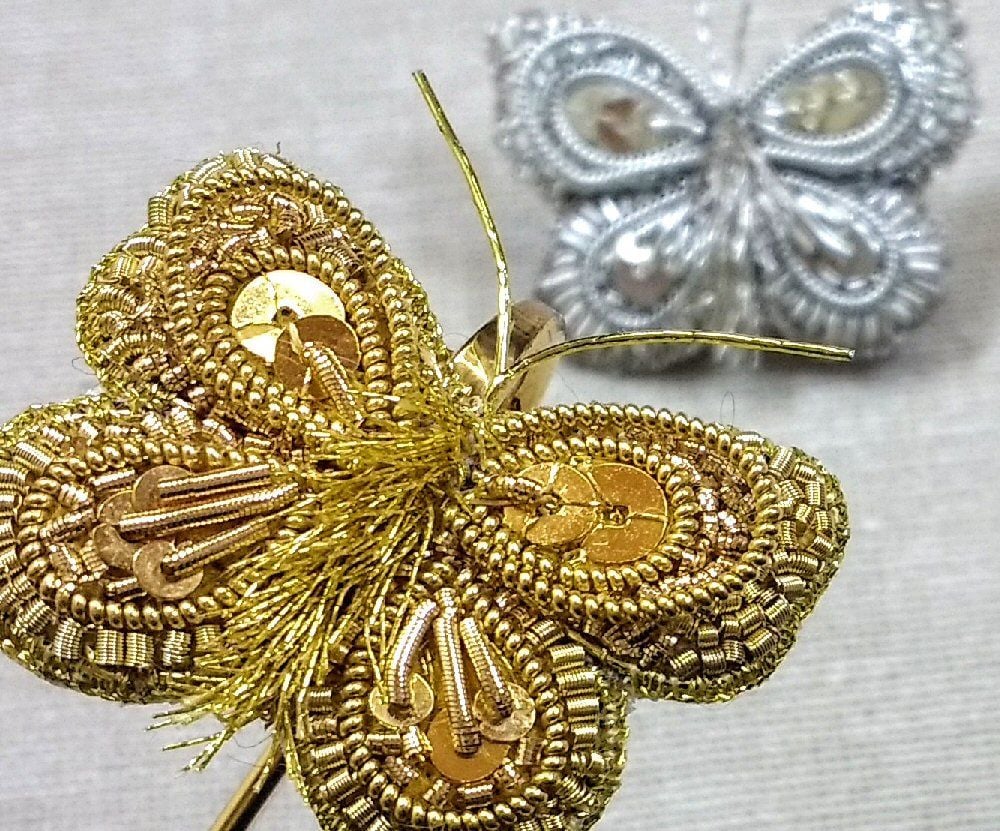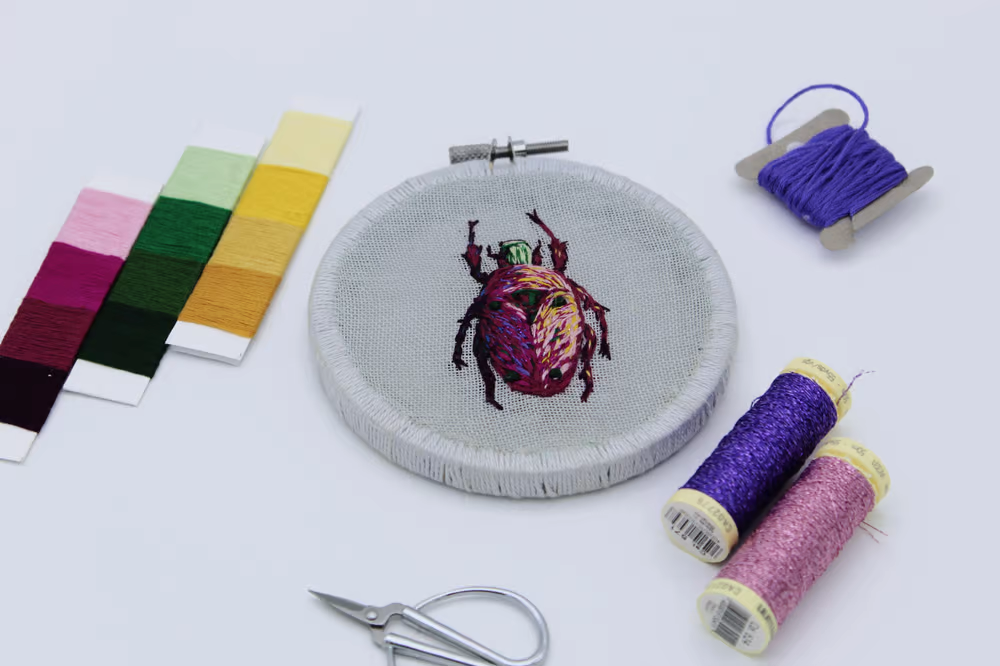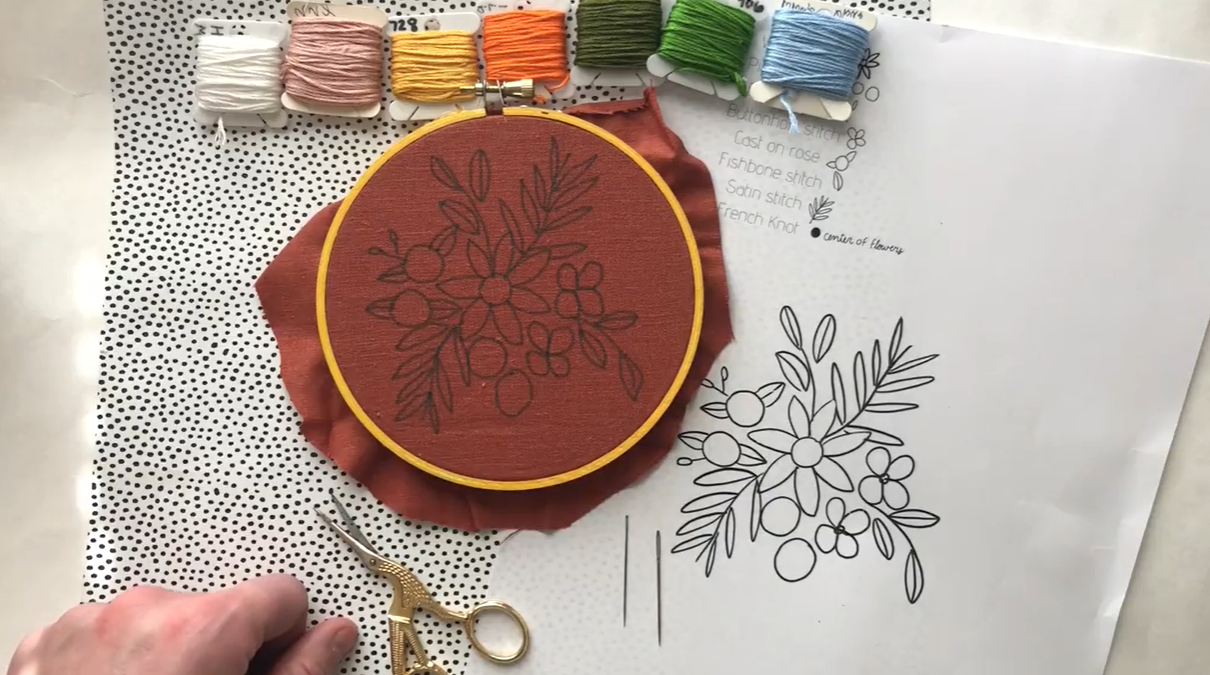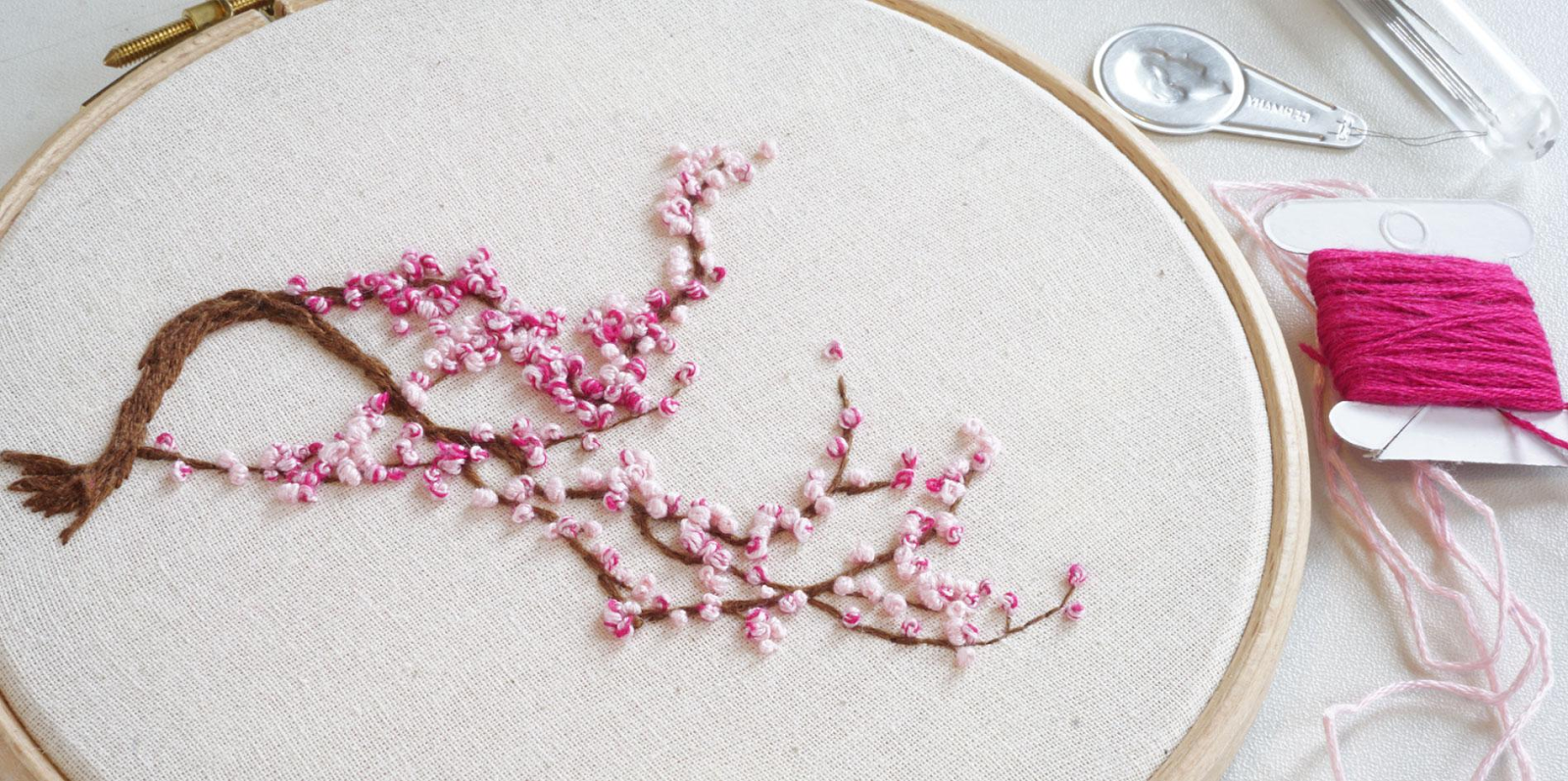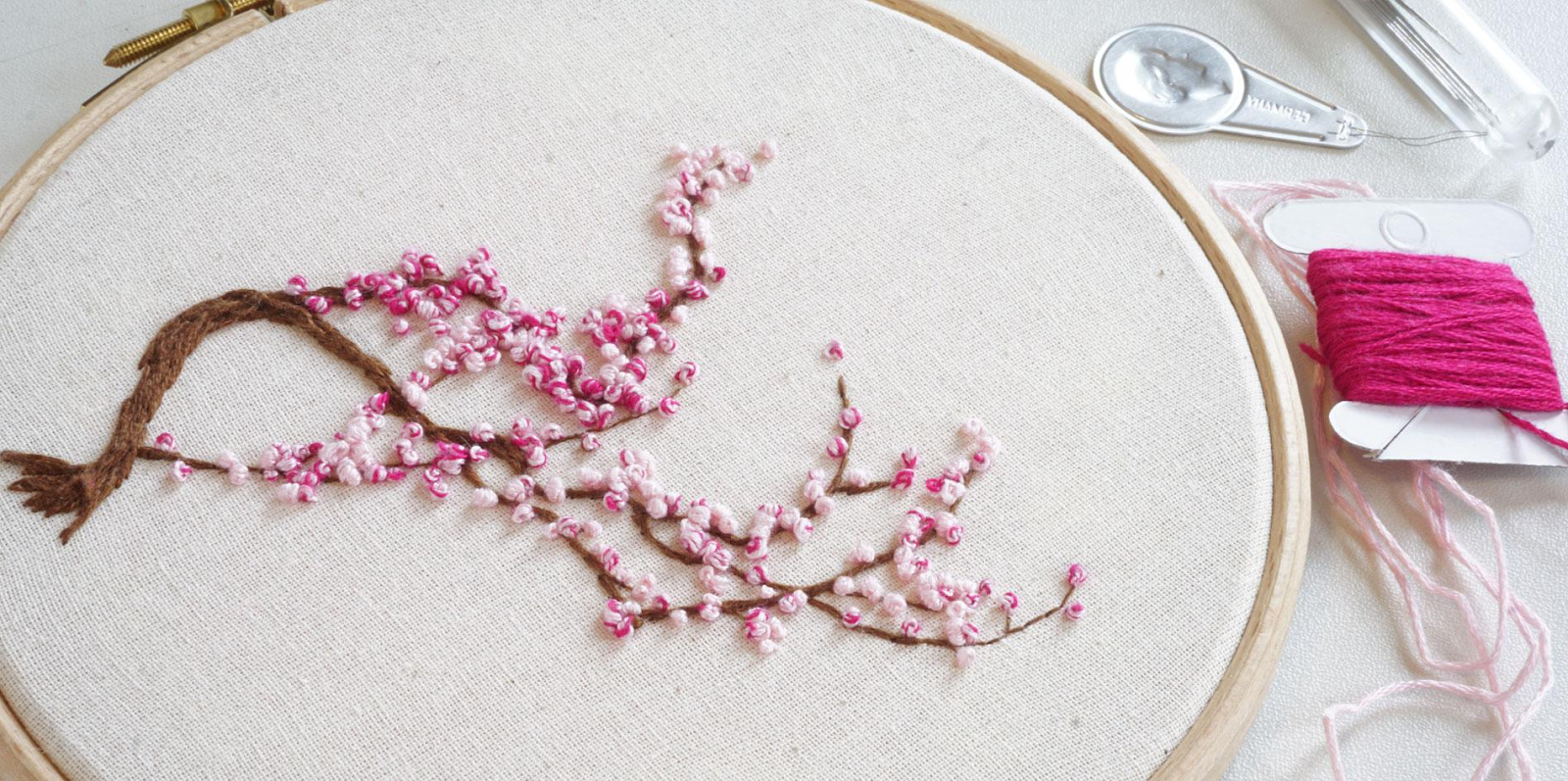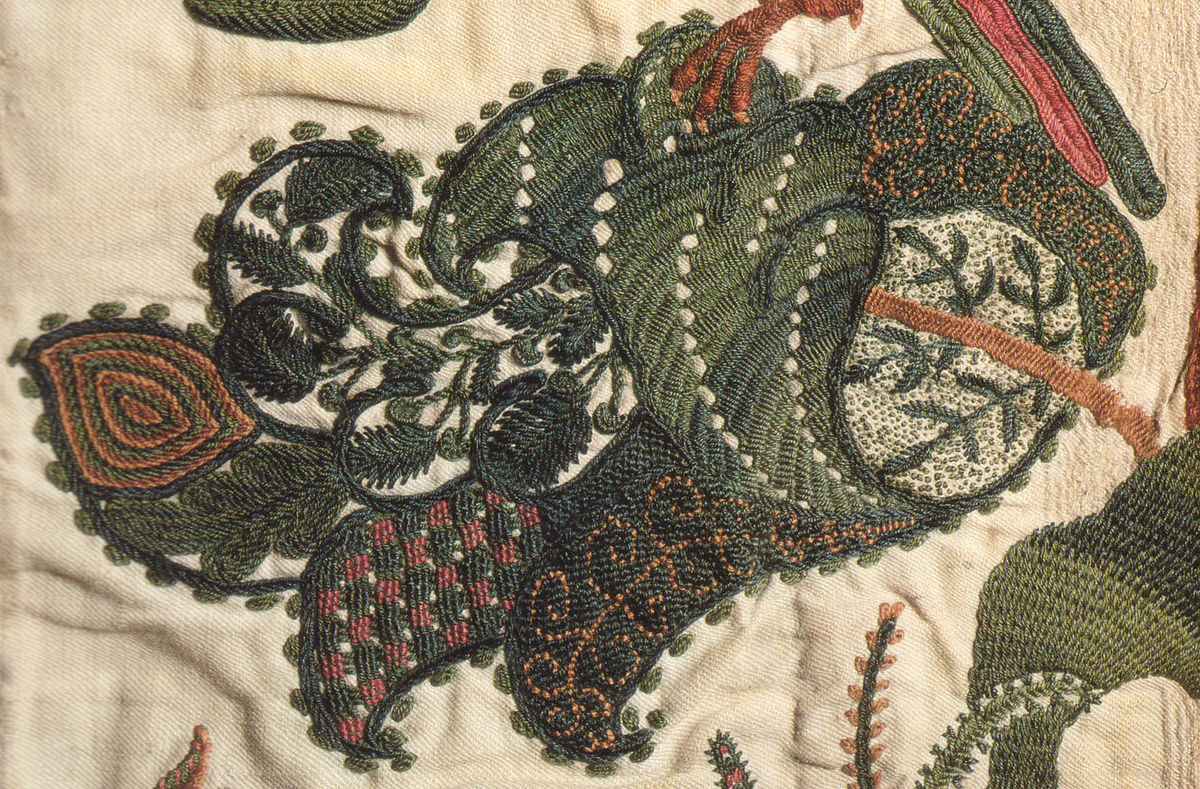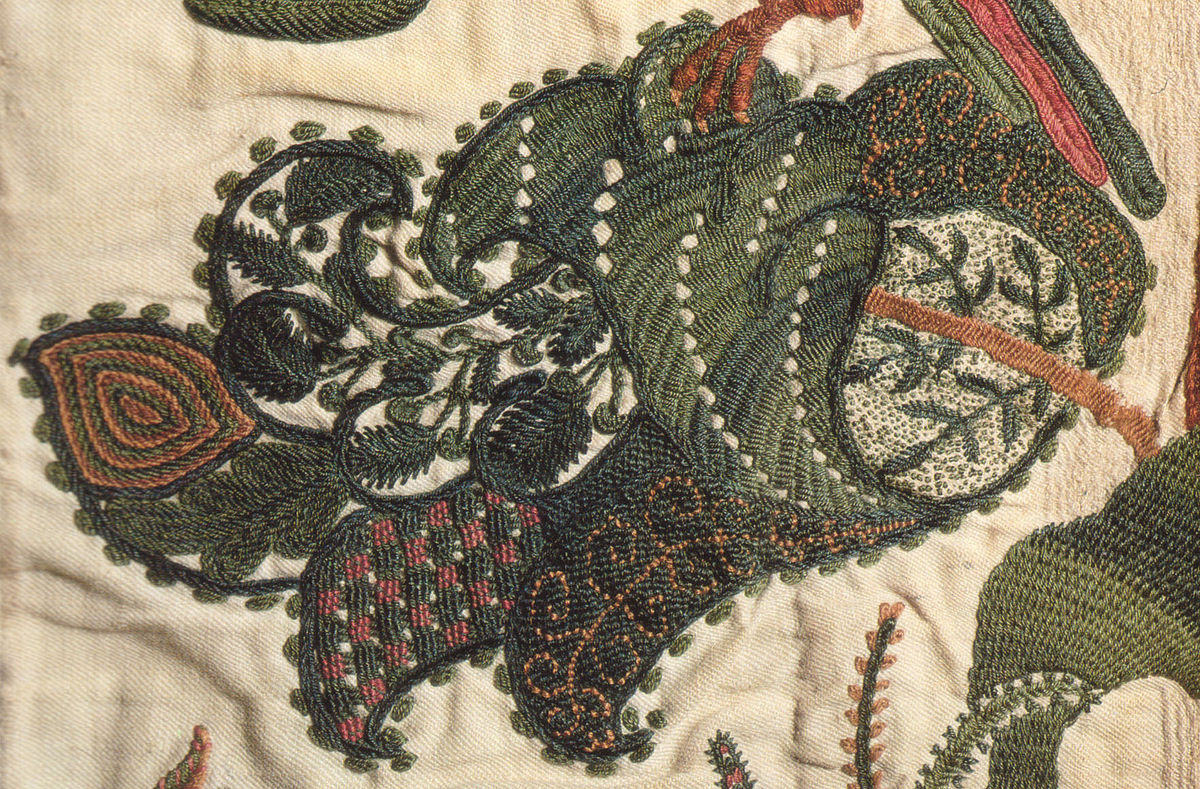Goldwork Embroidery Basics: A Comprehensive Guide for Beginners
Goldwork embroidery is a traditional and luxurious form of needlework that has been used for centuries to create intricate, beautiful designs. Known for its stunning use of metallic threads, goldwork embroidery can be found in everything from religious artifacts to royal garments. This technique can be daunting for beginners, but with the right knowledge of tools, materials, and techniques, anyone can learn to create stunning goldwork embroidery pieces. In this article, we’ll cover everything you need to know about goldwork embroidery basics, from essential materials to essential techniques.
What is Goldwork Embroidery?
Goldwork embroidery is a style of embroidery that involves the use of metallic threads, most often gold or silver, to create intricate designs on fabric. The technique was historically used for religious vestments, royal clothing, and ceremonial garments, but today it is enjoyed as a form of art and craft. Goldwork embroidery stands out because of the way it catches and reflects light, creating a rich, elegant look.
The primary thread used in goldwork is metallic thread, which is made by wrapping a fine wire around a core thread or coating a thread with a thin layer of metal. This results in a shiny, reflective surface that mimics the appearance of gold, silver, or other precious metals.
Goldwork embroidery is often combined with other techniques like silk shading, beads, and sequins to create vibrant, textured designs. It’s perfect for creating detailed, decorative embellishments, and with a bit of practice, it can be used for everything from clothing to home decor.
Essential Tools and Materials for Goldwork Embroidery
Before diving into the techniques, it’s essential to gather the right materials and tools for your goldwork embroidery projects. Using the correct materials will ensure that your stitches are precise, the metallic threads stay intact, and your finished piece looks as polished as possible. Here’s what you’ll need:
1. Fabric
Choosing the right fabric is critical for any type of embroidery, but especially for goldwork, as the fabric needs to support the weight and tension of metallic threads. Popular fabric choices for goldwork embroidery include cotton, linen, and silk. These fabrics provide a sturdy surface that can handle the tension created by the heavier metallic threads without puckering or distorting the fabric.
For beginners, cotton or linen is often recommended, as they’re easier to work with and more affordable than silk. The fabric should be tightly woven to ensure that the stitches stay securely in place.
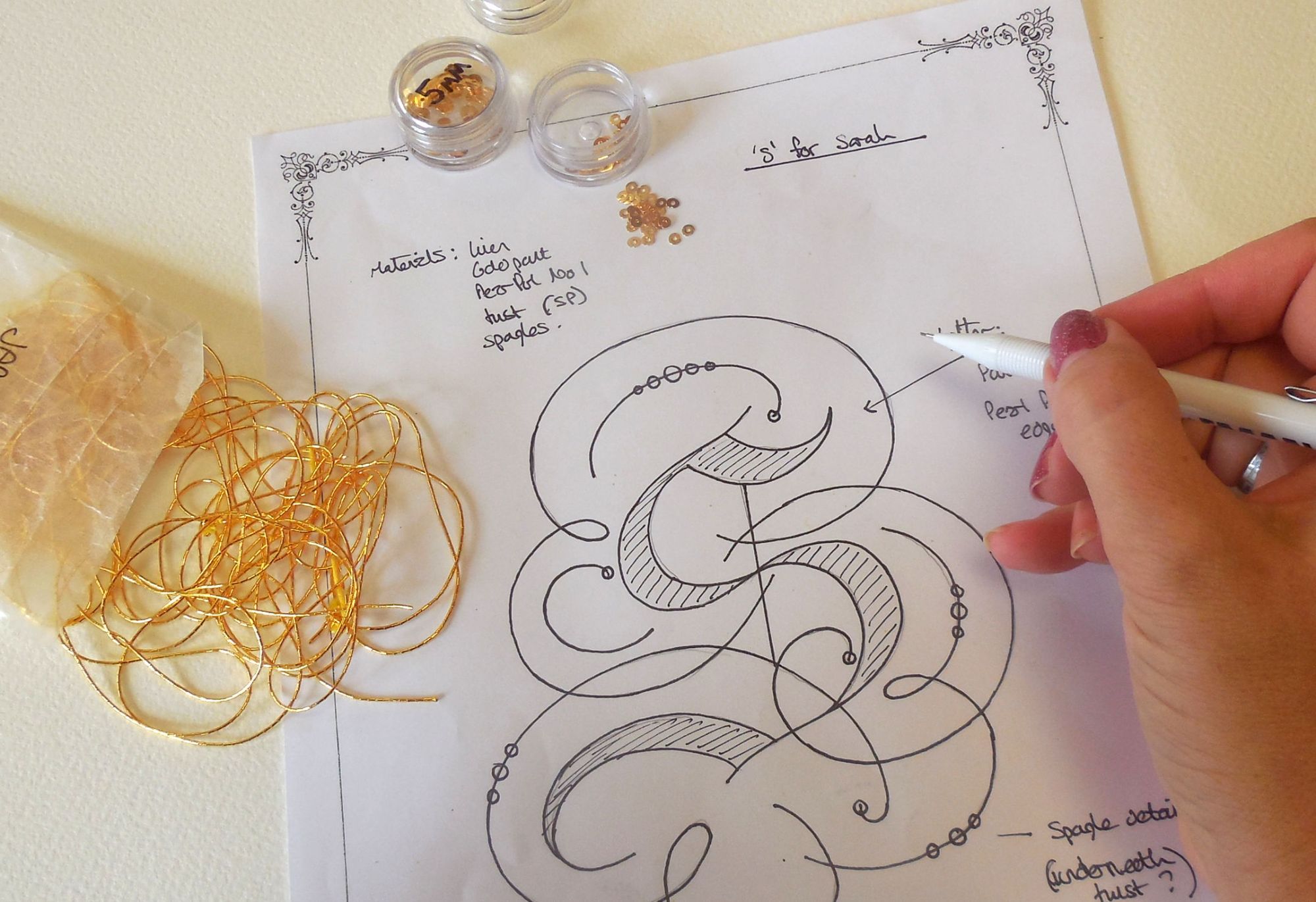
2. Metallic Threads
The core of any goldwork piece is the metallic thread. These threads come in a variety of forms, including passing thread, couching thread, and thread with a metal core. Passing thread is often the primary thread used for goldwork because it’s relatively thick and flexible, perfect for creating bold designs. Couching thread is used to hold the passing thread in place, while metallic threads can also be used for finer detailing.
You can find metallic threads in a variety of colors and textures, but gold, silver, and copper are the most commonly used. It’s also worth noting that metallic threads can be more delicate than regular embroidery floss, so handling them carefully is crucial.
3. Needles
Goldwork requires specialized needles designed to accommodate thick metallic threads. The most commonly used needles for goldwork are crewel needles, which have a larger eye to accommodate the metallic threads. They are also tapered to a fine point, allowing for easy insertion into the fabric without causing damage to the thread or fabric.
If you’re using passing thread, you may also need blunt-end needles to prevent damaging the delicate threads.
4. Embroidery Hoop or Frame
While it’s possible to do goldwork embroidery without a hoop, using an embroidery hoop or frame is highly recommended. A hoop helps to keep your fabric taut, ensuring that the stitches are evenly placed and preventing any distortion in the design. It’s especially useful when working with metallic threads, as it ensures you have enough tension to prevent thread tangling.
5. Scissors
Since metallic threads can be delicate, it’s important to use a pair of sharp, small embroidery scissors to cut your threads. A clean, precise cut will prevent fraying and help maintain the overall quality of your goldwork piece.
6. Beeswax or Thread Conditioner
Because metallic threads can be prone to tangling, it’s often helpful to run the threads through a bit of beeswax or a thread conditioner before stitching. This adds a bit of lubrication to the thread, making it easier to work with and helping prevent fraying.
Goldwork Embroidery Techniques You Need to Know
Goldwork embroidery involves several techniques that work together to create intricate, textured designs. Below are some of the most commonly used techniques in goldwork:
1. Couching
Couching is one of the most fundamental techniques in goldwork embroidery. It involves laying a thread (often a metallic thread like passing thread) onto the fabric and securing it in place with another thread (called the couching thread). The couching thread is stitched down over the metallic thread in small, evenly spaced stitches. This creates the appearance of a smooth metallic line without the need to stitch through the delicate metallic thread.
Couching can be used to outline shapes or create textured patterns in goldwork embroidery. The placement of the couching stitches can significantly affect the final appearance, so experimentation is key to achieving the desired look.
2. Padding
Padding is used to add dimension to a design, giving it a raised or sculptural effect. Padding involves stitching layers of thread (usually wool or a thicker type of cotton) to build up areas of the design, creating a raised surface on which the metallic thread is applied. Padding is often used in combination with couching to add extra depth and texture to designs.
When padding, make sure the layers are smooth and even, as this will ensure that the final goldwork looks polished and uniform.
3. Using Different Types of Metallic Threads
Goldwork embroidery often uses a variety of different metallic threads, each with its own unique look and application. Below are a few types of metallic threads commonly used:
- Passing Thread: This is the primary metallic thread used for goldwork. It’s typically a thick, flexible thread used for creating outlines and bold designs.
- Variegated Threads: These threads have a range of colors that change gradually along the length of the thread, adding visual interest and texture to designs.
- Gold or Silver Wire: For more advanced goldwork projects, you might use gold or silver wire. This wire can be sewn onto the fabric for a truly luxurious finish, often using a couching technique to hold it in place.
4. Shading and Blending
Shading in goldwork is often done using metallic threads in different shades to create a smooth transition between light and dark areas. This technique is often combined with silk shading or other thread types to create a more nuanced effect. By blending different types of threads, such as metallic and non-metallic threads, you can achieve a more sophisticated design.
Experiment with shading in small sections of your piece to see how the threads interact with each other. Be mindful of the direction of your stitches, as this can also affect the overall effect.
